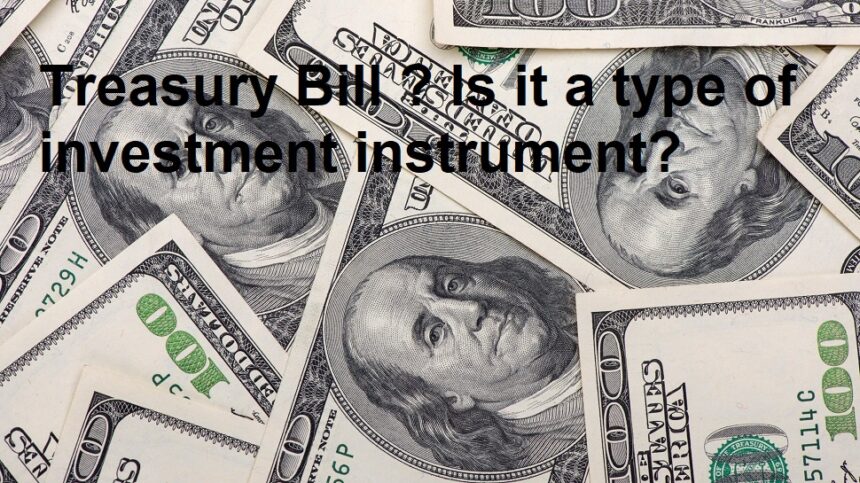What is a Treasury Bill?
Treasury bill is a money market instrument that is also a type of bond. Treasury bills have a lower risk than other types of bonds in general. Therefore, it is categorized as a money market instrument.
Treasury bills are short-term bonds guaranteed by the US government. This type of bond is known to be low risk because the US government has never defaulted on its debts. In addition, this type of bond can also provide additional benefits, through the positive trend of the US dollar.
Treasury bills are available with the lowest price is $100 and the maximum purchase is $5 million. Treasury bill is certainly not an investment instrument
which is common, especially for retail investors in Indonesia. Because treasury bills are US bonds while not everyone is familiar with bond instruments, let alone treasury bills.
Treasury bills have maturities ranging from one month, three months to 12 months. This maturity period is much shorter than other types of bonds, which are usually a minimum of 12 months. The short time is actually quite profitable, because investors can receive their money back faster.
Treasury bills are also zero coupon bonds. The profit on treasury bills comes from purchasing treasury bills at a discount but when they mature, the principal debt will be fully returned. For example, a treasury bill has a value of $1000. Usually investors can buy these bonds for under $1000, whether it’s $980, $975 and so on. So, at maturity the investor will still receive payment of the principal debt of $ 1000
The advantages and disadvantages of treasury bills
Treasury bills are the same as investment instruments in general. Treasury bills have several advantages, but also at the same time have some disadvantages.
Advantages:
1. Short maturity
2. Low risk
3. Affordable price
4. Offered every week or month
Deficiency:
1. Sold over the counter
2. The Indonesian government has not issued a treasury bill
3. Investment profits can be affected by fluctuations in the dollar exchange rate against the rupiah
4. New profits can be received after the due time
Treasury Bills are short-term notes or bonds issued by the United States government. Called short term because it usually only has a grace period of less than one year. Treasury Bills or often referred to as T-Bills are usually sold at a price range of US$1,000 to US$5 million.
Treasury Bills themselves are traded to the public through financial markets so that anyone can buy them in various ways. T-bills are considered the safest investment instrument because they do not have the risk of default because t-bills are issued and underwritten directly by the United States government. Treasury bills are issued to help fund public projects, such as the construction of highway infrastructure, to public facilities such as schools.
Another thing to note regarding treasury bills is that there are no coupons or interest in these notes. Like foreign exchange trading, these bonds can only make a profit from the difference between the selling price and the buying price. Therefore, the American government sells these bonds at a lower price, and will buy them back at a higher price.
In general, T-Bills have a tenor of 90 days to 1 year. However, there are also those with tenors of less than three months.
Treasury bills were issued to anticipate the government’s need for quick funds for short-term financing. Therefore, it uses a short tenor system that is applied flexibly according to financing needs.
Sometimes the implementation of a project must start immediately but the budget for the project can only be disbursed in one month. In order for the project to be implemented on time, funding is done by issuing treasury bills with a tenor of 1 month.
The term treasury bills is more popular in America. While in Indonesia it is better known as the State Treasury Letter (SPN) with a tenor of up to 12 months. The return on SPN is in the form of interest payments at a discount.
The function of treasury bills is in principle the same as bonds in general. For the government as a means to collect funds from the public to finance public projects. Meanwhile, for investors, treasury bills are a low-risk investment instrument because they are guaranteed by the government.
The difference between treasury bills and ordinary bonds lies in the form of yield given to the holder. In ordinary bonds, the holder is given a coupon yield with a fixed percentage.
Meanwhile, the holder of treasury bills earns a yield in the form of the difference between the discounted price and the nominal price at maturity. The amount of yield to be received by treasury bills holders depends on the discount price determined during the auction process.
Are treasury bills a promising investment instrument?
Yes Especially for short term investments. Although the yield may be smaller than other bonds, because it is only the difference between the discount price and the nominal price at maturity.
The Treasury department sells T-Bills during the auction using a competitive and non-competitive bidding process. Non-competitive bids or also known as non-competitive tenders, which have a price based on the average of all competitive bids received. T-Bills tend to have high returns
The US government issues T-bills to fund various public infrastructure projects, such as the construction of schools and roads. When an investor buys a T-Bill, the US government effectively makes an IOU to the investor. T-bills are considered a safe and conservative investment.
T-Bills are usually kept until the due date. However, some holders may wish to cash out before maturity and realize short-term interest gains by reselling the investment on the secondary market. T-bills can mature in just a few days or a maximum of 52 weeks, but generally mature in 4, 8, 13, 26, and 52 weeks.3 The longer the maturity date, the higher the interest rate. T-Bill will pay investors.
How to Redeem T-Bill and Earned Interest
T-bills are issued with a deduction from the face value, or face value, which means the purchase price is less than the face value of the bill. For example, a $1,000 bill might cost an investor $950 to purchase a product.
When the bill is due, investors are paid according to the face value, i.e. the face value of the bill they bought. If the nominal value is greater than the purchase price, the difference is the interest earned by the investor. T-bills do not pay the usual interest payments as is the case with coupon bonds, but T-bills do include interest, which is reflected in the amount paid at maturity.
T-Bill Tax Considerations
Interest income from T-bills is exempt from state and local income taxes. However, interest income is subject to federal income tax. Investors can access the research division of the TreasuryDirect website for more tax information






















